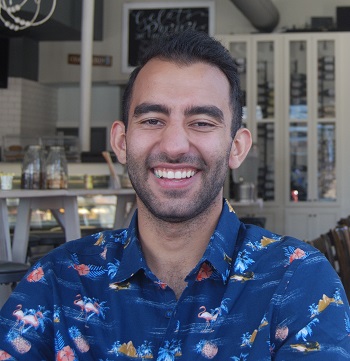Master’s students apply community health lessons as campus contact tracers
Bernie Stanton doesn’t need a computer or even a piece of paper: The details of Furman’s plan to trace and isolate COVID-19 infections on campus are imprinted in his brain.
“I’m living and breathing this stuff daily, minute by minute,” Stanton said.
Stanton has been director of risk management at Furman for 26 years. Preparation for the 2020-21 school year has been a challenge unlike any other in his career.
The plan to keep campus open and healthy involves students from Furman’s master’s program in community engaged medicine, who are being trained to serve as contact tracers.
“This is a perfect way to take what they are learning right now … and apply it,” said Victoria Turgeon, a biology professor and director of the master’s program.
Field work is a standard program requirement. But the work is usually community-based – and many of the regular placements are only virtual right now. So when the opportunity arose, it made sense to deploy the students to assist the campus effort and at the same time provide the experience they need.
“Society is very intricately interwoven, and so many things are interconnected,” said Mo Hooshmand M’21, one of the contact tracers, who earned his undergraduate degree from Winthrop University. He said the students in community engaged medicine are already passionate about the intersection of medical science and social determinants of health.

Mo Hooshmand M’21.
“I can only think this will benefit me a great deal in the future,” said Hooshmand, who hopes to go to medical school after finishing at Furman.
The employee side of the plan runs through human resources. The student side begins with the Earle Student Health Center and then connects as needed with housing, athletics and academics.
The student plan, briefly, is:
- Students demonstrating symptoms will have a virtual screening through the Health Center. If that appointment suggests the need for a COVID-19 test, the patient would be immediately quarantined.
- Communication will be made quickly with the student’s immediate contacts: roommates, suitemates and significant others.
- The patient and immediate contacts will remain in quarantine or isolation until test results come back. If the test is negative, the students all transition back to their regular living situations.
- If the test is positive, the student remains in quarantine as do the immediate contacts, who will begin receiving check-in calls about their own health and any symptoms. In most cases, the immediate contacts will be tested for COVID-19 on day seven.
- A positive test also will trigger a more detailed conversation about the patient’s movements in the days before noticing symptoms. Tracers will determine when the patient was in non-socially distanced situations for more than 15 minutes. Those “second-tier contacts” will receive calls to notify them of potential exposure and will be directed to quarantine or isolate.
- Second-tier contacts will also receive check-in calls from tracers. If they don’t display symptoms, they will be released from quarantine after 14 days from last exposure, but they’ll need to be cleared first by the Health Center, which could involve a test. “They can’t just walk out of quarantine,” Stanton said.
All students were required to make a quarantine plan before returning to campus. Those who live close enough have the option to go home to await test results or to recover if they test positive. Others will use designated campus quarantine spaces.
About half of the student body was back on campus by mid-August. The rest will return by mid-September.
Students in the contact tracing program had their first experience at the end of August, when 59 students were quarantined and tested for COVID-19 after reports of unauthorized parties at a former fraternity house. University contact tracers have been speaking with those who attended the parties to determine the number of close contacts they had with others. A close contact is defined as being within 6 feet for more than 15 minutes, with or without a face covering, with anyone testing positive for COVID-19 within 48 hours before experiencing symptoms.
In addition to training through the Johns Hopkins Bloomberg School of Public Health, the student tracers participated in a simulation in which they proceeded as if Turgeon had received a positive test result. She collected friends’ phone numbers and gave them to the tracers so they could practice the protocol for contacting second-tier contacts.
HIPAA rules require careful handling of these calls. Students who are exposed won’t be told by whom or the specific setting in which they were exposed. Professors will be informed that a student won’t be in class, but won’t be given any details, either.
Additionally, to maintain the highest possible standards of privacy, master’s students from other undergraduate institutions will run the student side of contact tracing while those who earned bachelor’s degrees from Furman will handle the employee side, preventing students from needing to share personal health information with recent classmates.
For the students in community engaged medicine, it’s a real-life illustration: Day-to-day interactions and behaviors have significant impact on individual health and community health.
“It’s allowing them to see firsthand the things that we are teaching them in the textbooks,” Turgeon said.
Read more about Furman’s work to maintain a healthy campus.